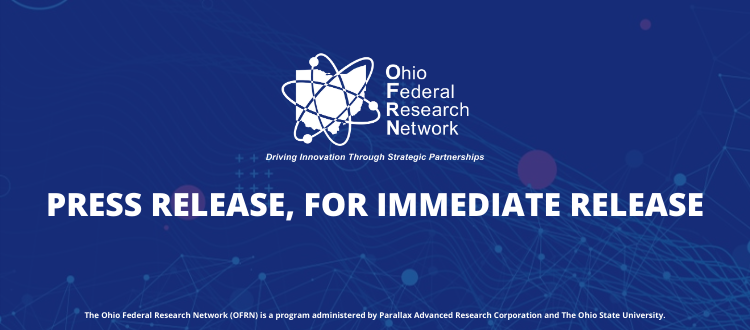What’s the number one complaint for U.S. Navy Aircrew? Surprisingly enough, one of the top issues for Naval aircrew is lower back pain – something to which most of us can relate. But in the US military, lower back pain is linked to motion sickness and for military pilots, that can lead to life and death situations. More than a quarter of all fatal military flight accidents are caused by spatial disorientation— commonly known as motion sickness— which on average claims dozens of lives every year. What many do not know is that it also takes a heavy toll on civilians. Experts estimate that 5-10% of all general aviation accidents are caused by spatial disorientation, and of those accidents, nearly 90% are fatal.
A team of researchers from The Ohio State University, Wright State Research Institute and the University of Cincinnati, funded by a $1.2 Million grant from the Ohio Federal Research Network (OFRN), are working with the Naval Medical Research Unit in Dayton to study the link between lower back pain and motion sickness.
Humans sense and understand motion through a function within the inner ear called the semicircular canal. These canals are filled with fluid that include motion-sensing follicles. When excess fluid builds up, the communication between the follicles and the brain becomes disrupted, which causes that familiar feeling of motion sickness. The OFRN researchers are investigating how that disorientation muddles with our body’s routine postural controls, which help us move throughout the day. One of the key postural muscular functions is control over the lower back. These researchers are exploring potential links between when spatial disorientation occurs and if the body loosens its postural control over the lower back muscles – causing those terrible lower backaches and pains. OSU’s Dr. Bill Marras said, “OFRN gave us critical mass. They were the magnet that drew us [and NAMRU] together – and they are the glue that continues to hold us together.” As the principle investigator, Dr. Marras also stated that this research has “allowed us to develop a stronger relationship with NAMRU over time and moving forward, we now have more research with them.”
The Ohio Federal Research Network (OFRN) grew out of the state’s new Federal Military Jobs Commission and was approved by Ohio’s legislature in 2015. In addition to aligning Ohio research universities with key government research requirements and industry partners, the initiative is also intended to leverage the State’s research and development capabilities. OFRN has a goal to create new jobs and add $350 million in new federal research contracts over five years.
While finding a way to reduce the loss of life and aircraft is the key focus of the study, this project also has commercial potential and could also spark new jobs in Ohio. This project, with business partner SpineDynx, has an opportunity to create and commercialize a cost-effective product and service for lower back pain and disorders – a condition that costs the US workforce over 149 million lost work days and over $100 billion in lost wages and productivity each year.
Dr. Marras and his colleagues are also considering whether this might help doctors diagnose and treat lower back pain more effectively, without over prescribing. One of the technologies being developed by the team helps measure and quantify a person’s back pain – compared to current clinical practice which has patients measuring pain on a subjective 1-10 scale.
To date, the OFRN team has received nearly $45 million in new research awards because of this effort, with $200 million more in the pipeline. These research projects are all aligned with the strategic research priority areas of the Ohio based federal labs and have included 11 universities throughout the state and 52 industry partners – a tremendous statewide impact.
Speaker of the House Cliff Rosenberger shared, “In 2015, when my colleagues and I approved the OFRN structure and funding, we were confident it would have a significant impact on the state, but frankly I am not sure we could have predicted its remarkable success. With projects like this one which has the best research minds working together to solve tough, life and death problems for our military, there is no doubt the OFRN is a success. It is enhancing the competitive posture of Ohio research universities and firms and that means more opportunities for Ohio.”
Martin P. Kress, Assistant Vice President for Research for The Ohio State University and co-director of OFRN added, “This type of aligned research network has been tried in other states, and has failed. However, our approach here in Ohio is unique and it’s working because everyone sees the value in this collaboration. We are grateful to the leadership and support from the Ohio legislature. Because of their support we are able to continue to leverage our OFRN investment and achieve even greater results for Ohio.”
Dr. Caroline C. Whitacre, OSU’s Senior Vice President for Research OSU commented, “We are fortunate in Ohio to have the national labs at NASA Glenn and Wright Patterson Air Force Base. The Ohio Federal Research Network (OFRN) has been able to leverage our vast network of research capabilities here in Ohio in a way that can best meet the research needs of these assets. It’s truly a win for everyone and all of us at The Ohio State University are excited to be a part of it and proud to be helping to lead this effort with our colleagues across the state.”


